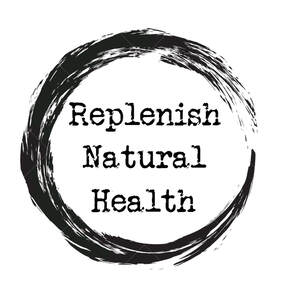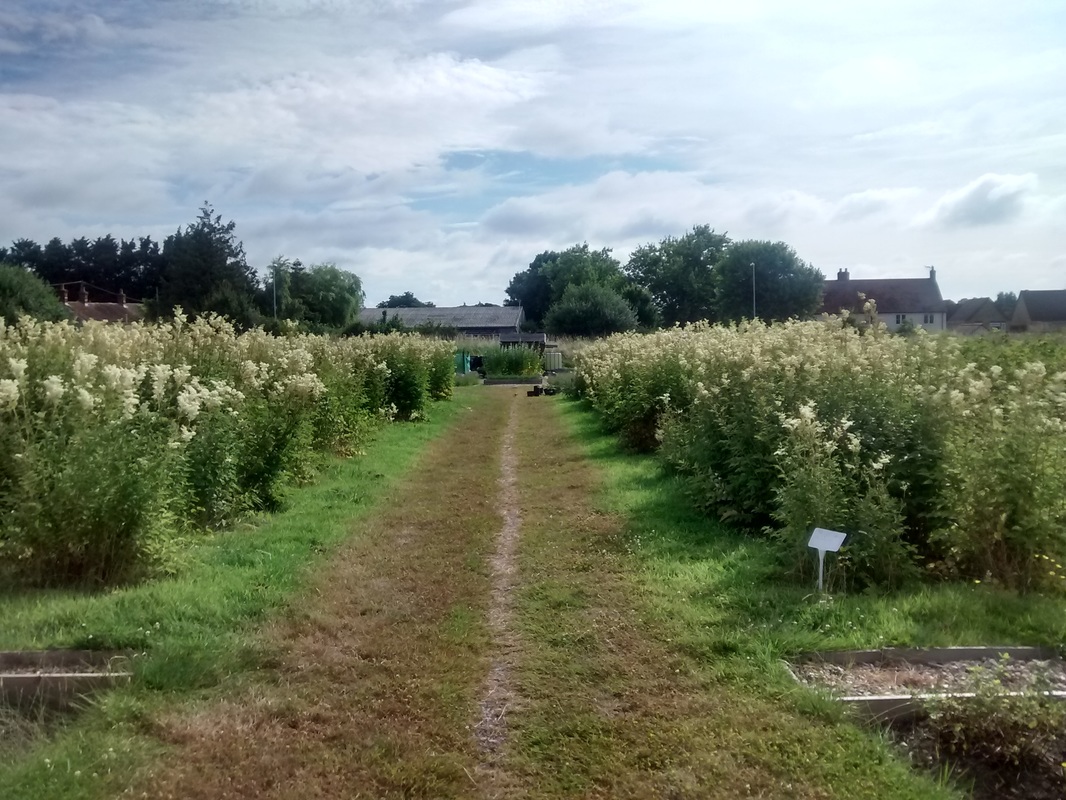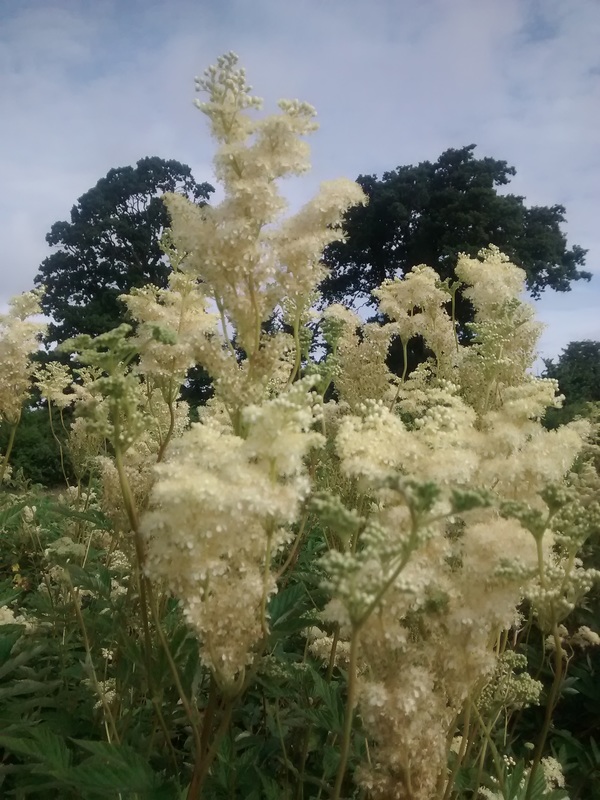|
The meadowsweet has seemingly loved the wet, damp summer we have had so far. This year has produced a particularly lush bounty, and once the flowers 'popped' from their little white pods I was hit with their familiar almond aroma. On hotter days the smell would be intensified, and the bees would flock, getting drowsy on meadowsweet's fragrant pollen. Often on my lunch breaks I would come and sit in this avenue, listen to the bees, watch the plant languidly sway in the breeze, and would instantly feel calm. Many herbalists say that to know a plant you are to spend time with it, and I agree! Meadowsweet overview & medicinal uses Latin name: Filipendula ulmaria Family: Rosaceae Parts used: Flowers and leaves Random facts:
Habitat and cultivation: Meadowsweet is native to Europe and Northern Asia, and loves growing in damp meadows, swamps and ditches (hence why it has thrived this wet summer). It is frost resistant, and can be grown from seed or root division in winter or early spring. Harvest once it has flowered (June to September), but before it goes over to seed. Use leaves closest to the flowers, the further down you go, the older those leaves are and will be passed their peak. Medicinal actions: Anti-inflammatory, diuretic, astringent, anti-rheumatic Medicinal uses: Meadowsweet contains salicylates*, a consituent that was isolated and later synthesised into what we now know as aspirin. However unlike aspirin which can cause gastric ulcerration at high doses, meadowsweet, as a whole plant with its other consituents balances and acts to protect the stomach lining, whilst still providing the anti-inflammatory benefits from the salicylates. This highlights how complex herbal medicine is - for plants not to be considered by their active constituents in isolation, but as a whole energetic system. *Some people are sensitive to aspirin, caution is advised*
How to make meadowsweet glycetract... Glycetracts are liquid herbal extracts that uses glycerine as its base for extraction. It tastes naturally quite sweet making it more suitable for children, and can be used by diabetics because it converts to glycogen not glucose.
As herbal tinctures are usually made from alcohol, glycetracts are a great alternative for people wishing to avoid alcohol, or for people with liver damage. However, it is worth bearing in mind that glycetracts are not as effective as ethanol in drawing out and extracting all the medicinal constiuents making it a less concentrated form. Vegetable glycerine is preferable to animal, and it should keep for 1-2 years. When making a glycetract - Fresh or dried herb can be used. However I would recommend drying first to get a more definative result if you have not tried this before. Different fresh herbs have different water contents which may not come out as you would like. Get to know your herbs first. Dried: The amount of glycerine should be at least 60%, the remaining 40% being water. Fresh: At least 80% glycerine, 20% water (allowing for water content of herb too) In a 500ml jar:
To be taken when symptoms are present, not as a daily preventative A glycetract is just an example of how this herb can be used, it can also be dried as drank as tea, made into an oil, added to baths, or made into a tincture. Please see past posts for other recipes!
2 Comments
Emily
18/8/2016 02:22:20 am
Hey Emma do you use the flowers and leaves? Do you harvest at this time- when the flowers are just blooming?
Reply
Replenish natural health
21/8/2016 03:23:17 pm
Hi Emily - So you are at the college?
Reply
Leave a Reply. |
AuthorEmma is passionate about promoting good health, and likes to keep things simple. She enjoys yoga, meditation & being outdoors, yet likes to indulge in coffee, wine & cake - Everything in moderation! |



 RSS Feed
RSS Feed
